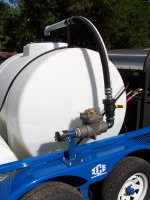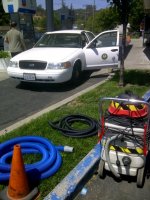Matthew Norman
Moderator
My technician was just wrapping up all the hoses getting ready to leave when the city of englewood stops and gets out of his vehicle. He begins to question my employee on what he is spraying? My guy was sort of confused and told him he just got done washing a house.
The guy starts yelling outside my customers house at my employee telling him he needs to have an air gap on our garden hose water feed line and that we are the reason people are getting sick and that he has three fines that he is going to write us up for. Our technician just appologized to him and was very respectful and he finally ends up leaving without giving any tickets. We also have a 3" fire hydrant air gape on the trailer which is very noticable and has passed inspection. This is the first time I've ever heard of having an air gap for your water feed hose. This is getting crazy...
The guy starts yelling outside my customers house at my employee telling him he needs to have an air gap on our garden hose water feed line and that we are the reason people are getting sick and that he has three fines that he is going to write us up for. Our technician just appologized to him and was very respectful and he finally ends up leaving without giving any tickets. We also have a 3" fire hydrant air gape on the trailer which is very noticable and has passed inspection. This is the first time I've ever heard of having an air gap for your water feed hose. This is getting crazy...



